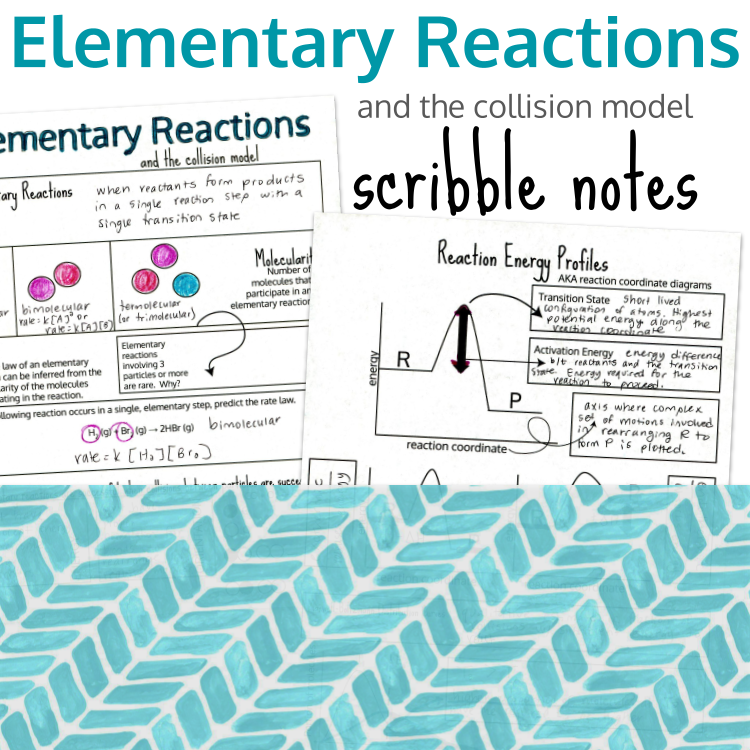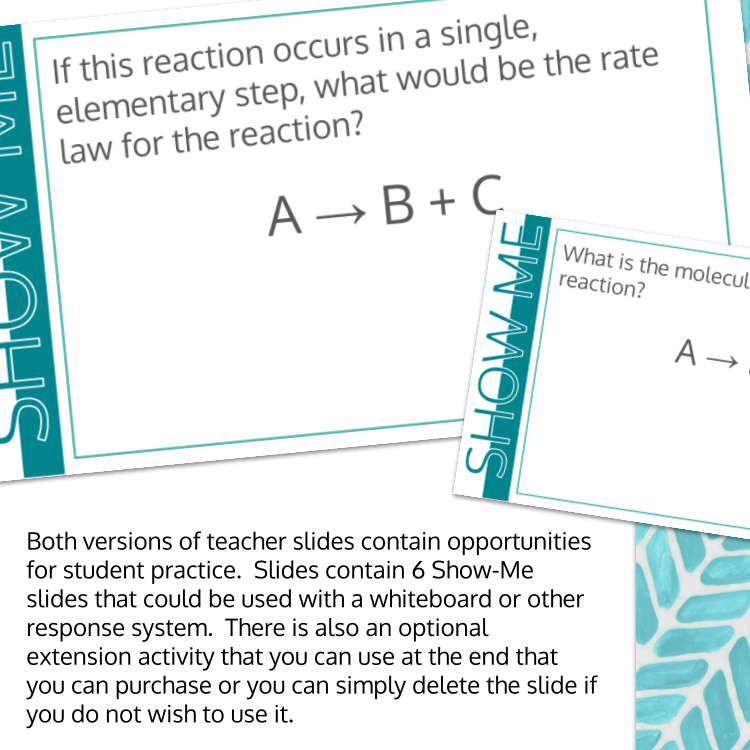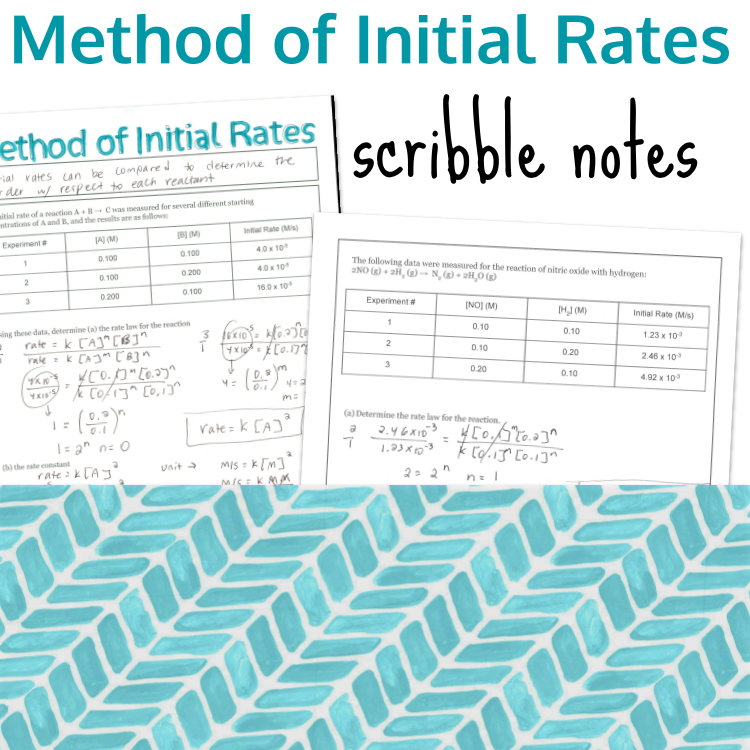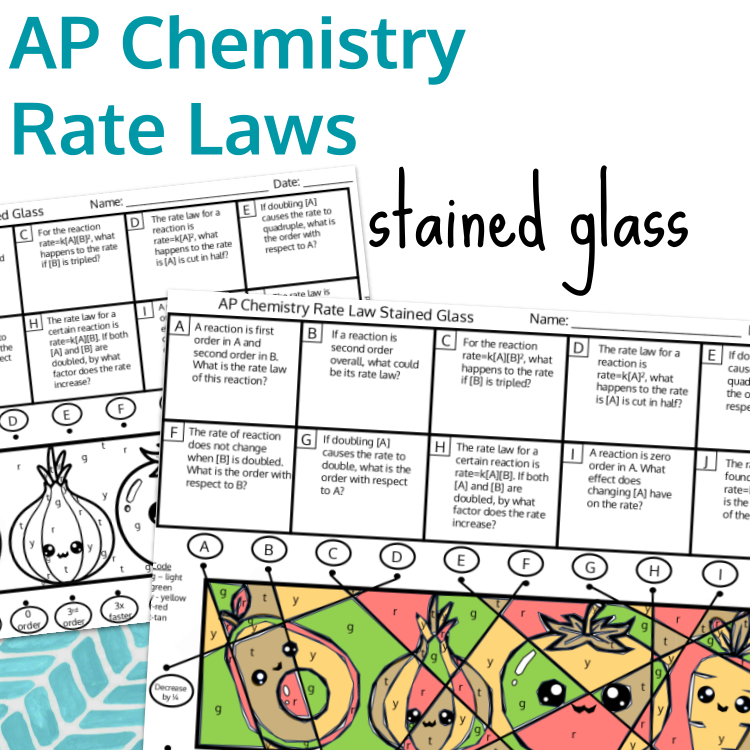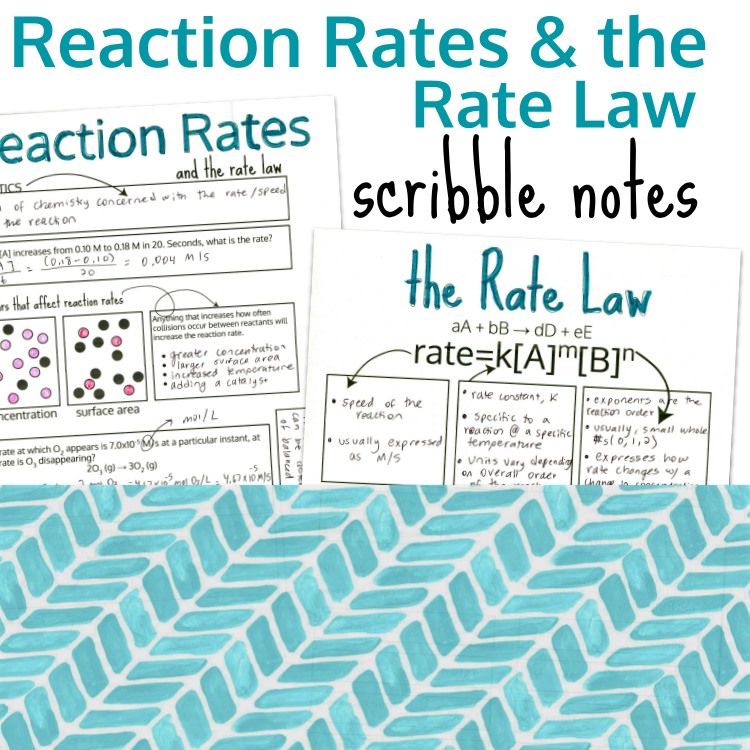 Image 1 of 2
Image 1 of 2

 Image 2 of 2
Image 2 of 2



AP Chemistry Kinetics Reaction Mechanisms Mole Hill in Print and Digital Versions
Use this mole hill to help students practice determining the rate law when given a multistep mechanism in an engaging and self-checking activity! This mole hill contains 10 mechanisms for determining the rate law of a reaction. Of these 10 mechanisms, there is an included mix of reactions where the first step is the slow step, and others where the first step is at equilibrium and the second step is slow.
For the print version, students will begin with all sides flipped to the answer side. Students will choose one card at random to flip to the question side, and then will answer that question. The answer to the first question will be in the answer bank somewhere, and when they find it, they flip that card over to the question side, placing it on top of the previous question. This forms a "mole hill," or question pile/question stack. The activity is very similar to dominos, except the students will stack their work. You will need to print out and cut the cards in enough sets for pairs of students to complete the activity. I also recommend laminating the cards for durability.
For the digital version, the process is very similar, except it is in a Google Sheet. Students will flip cards, but there is no stacking. Both you and your students must have a Google account and access to the internet to use this resource.
This resource includes both a print version (in color and an ink-saving version), along with the student Google Sheet for the digital version.
Join my email list and receive four self-checking ideas, along with four FREE self-checking products and/or templates.
Let's connect on Instagram.
Use this mole hill to help students practice determining the rate law when given a multistep mechanism in an engaging and self-checking activity! This mole hill contains 10 mechanisms for determining the rate law of a reaction. Of these 10 mechanisms, there is an included mix of reactions where the first step is the slow step, and others where the first step is at equilibrium and the second step is slow.
For the print version, students will begin with all sides flipped to the answer side. Students will choose one card at random to flip to the question side, and then will answer that question. The answer to the first question will be in the answer bank somewhere, and when they find it, they flip that card over to the question side, placing it on top of the previous question. This forms a "mole hill," or question pile/question stack. The activity is very similar to dominos, except the students will stack their work. You will need to print out and cut the cards in enough sets for pairs of students to complete the activity. I also recommend laminating the cards for durability.
For the digital version, the process is very similar, except it is in a Google Sheet. Students will flip cards, but there is no stacking. Both you and your students must have a Google account and access to the internet to use this resource.
This resource includes both a print version (in color and an ink-saving version), along with the student Google Sheet for the digital version.
Join my email list and receive four self-checking ideas, along with four FREE self-checking products and/or templates.
Let's connect on Instagram.



